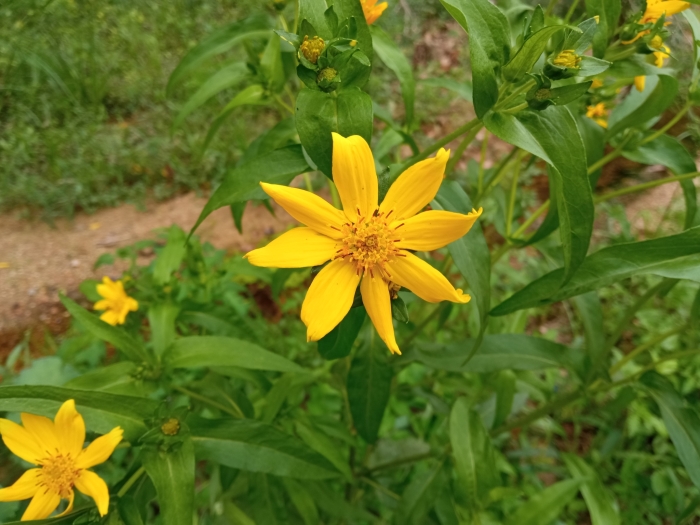Niger Seed
(Guizotia abyssinica)
Niger Seed (Guizotia abyssinica)
/
/

Josep Gesti
CC BY-SA 4.0



































Estimated Native Range
Summary
The plant is valued for its seeds, which are high in oil and protein, making it an important crop in its native region and a valuable food source for birds in cultivation. It is adaptable to various soil types, including light black soils, brownish loam, and well-drained heavy soils or rocky laterite soils. While it can grow in semi-shade, it prefers full sun and requires moderate rainfall or consistent watering. It is not commonly grown for ornamental purposes but can be used in mixed borders or as part of a wildlife-friendly garden. Potential problems include susceptibility to powdery mildew and bird damage, as the seeds are highly attractive to many bird species.CC BY-SA 4.0
Plant Description
- Plant Type: Herb
- Height: 1-2 feet
- Width: 1-2 feet
- Growth Rate: Moderate
- Flower Color: Yellow
- Flowering Season: Summer, Fall
- Leaf Retention:
Growth Requirements
- Sun: Full Sun
- Water: Medium
- Drainage: Slow, Medium, Fast
Common Uses
Bird Garden, Edible*Disclaimer: Easyscape's listed plant edibility is for informational use. Always verify the safety and proper identification of any plant before consumption., Low Maintenance, Showy Flowers
Natural Habitat
Ethiopian highlands, particularly grasslands and farmlands
Other Names
Common Names: Ramtilla, Niger, Niger-Seed, Inga Seed, Blackseed, Abessinisches Ramtillkraut, Guizotie, Gingellikruid, Negerfrö, Nigerfrö
Scientific Names: , Guizotia abyssinica, Guizotia oleifera, Guizotia oleifera var. sativa, Ramtilla oleifera, Bidens ramtilla, Heliopsis platyglossa, Polymnia abyssinica, Guizotia abyssinica var. abyssinica, Guizotia abyssinica var. sativa
GBIF Accepted Name: Guizotia abyssinica (L.fil.) Cass.